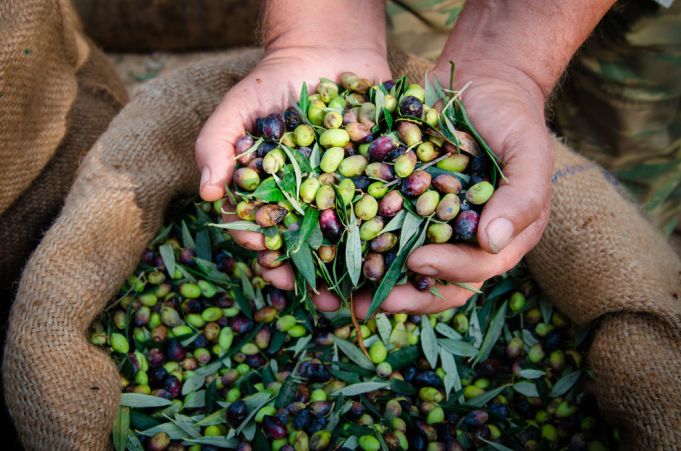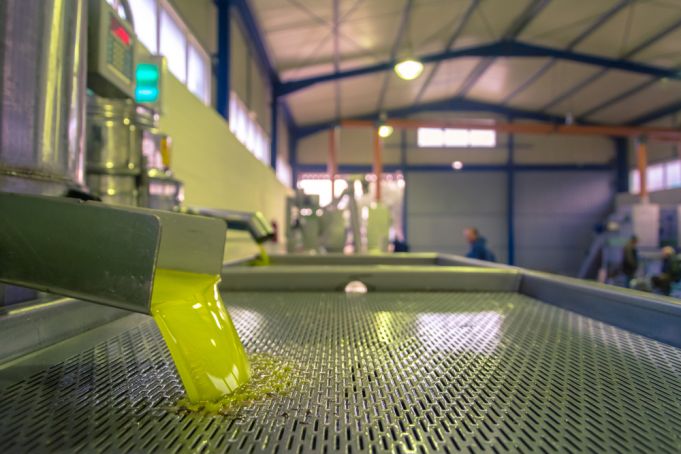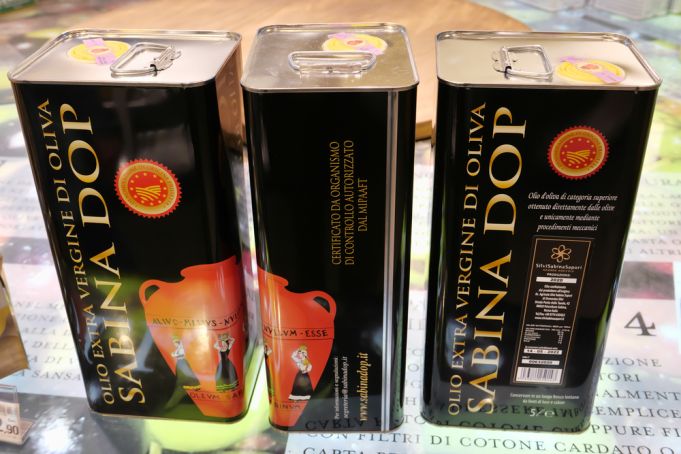Olive Oil Farms near Rome: Taste Testing and Traveling in Lazio
With the arrival of November, the olive growing areas of Lazio are in action and the mills are prepared to receive tons of ripe fruit that will be transformed into liquid gold. If you think that the oil in Lazio is less good than in Umbria, Tuscany, or Puglia (just to name the most famous production areas), you are making a mistake.
In autumn you will find the Sabine hills covered with nets used to collect the precious olives, wooden ladders resting on the strongest branches of the trees, men and women bustling around the gnarled trunks with rakes (much of the harvesting is still done by hand because of the steep terrain that characterizes many crops).
The olive harvest puts the whole family into action and often friends and neighbors are invited to contribute, who are later rewarded with liters of freshly pressed oil. Stop at the oil mills, ask to see the production process, taste a drizzle of fresh olive oil on a slice of toasted bread (the legendary "bruschetta") and if - as one imagines - you find it incredibly delicious, buy a few liters, it will be the smartest souvenir you bring home and all winter long you can savor the taste of Lazio.
Ph: REPORT / Shutterstock.com
Here is a list of agritourism hotels and B&Bs that offer the best farmhouse stays for exploring Lazio and discovering the methods and cultivation of olive oil.
Traldi Resort Agriwellness
You will find the resort in Vetralla, the land of porcini mushrooms, centuries-old woods and olive groves. The company was founded in the sixties when Angelo Traldi bought the 150 hectares of the estate in the territory of Vetralla, historically dedicated to olive growing.
Today his daughter Regina Elisabetta and granddaughter Francesca Boni, the current owner, directly manage all activities, from oil production to hospitality in the beautiful resort property that offers relaxation in nature with the formula Agriwellness. Among the company's oils is the popular Eximius, a single variety of Caninese olive, the most representative cultivar of the area.
Braciami
A farmhouse right in the heart of the town of Viterbo, between medieval relics and soft hills, Braciami was designed to offer a cheery experience, out of the chaos of the city. Surrounded by five hectares of green fields, protected by the Cimini Mountains and with a view that allows you to get lost in the surrounding area, nature is the star, along with, of course, the olive trees.
Podere dell'Arco Country Charme
Past and present blend at the Podere dell'Arco, a farmhouse from the fifteenth century and a long- time home to a small community of friars. In the nineteenth century the property belonged to Cardinal Carlo Cristofori, who put it at the disposal of the Church for the production of fruit and vegetables, and for the sustenance of the poor.
It is a family business that covers thirty hectares planted with forests, olive groves, lavender and small fruits. The ancient frateria overlooks a typical Viterbo landscape of a thousand shades of green, the starting point for interesting trails to explore on foot or by mountain bike.
Il Podere di Marfisa
Head to the town of Farnese, where you will be surprised by Il Podere di Marfisa, a farmstead that extends for over twenty hectares in the beautiful valley of Tuscia Viterbo, on the border with Tuscany. The Podere di Marfisa is a hotel and farm in a splendid position, with the hills on one side and the Tyrrhenian Sea on the other, which touches the land a with gentle breeze.
Cultivated with olive groves and vineyards, Terre di Marfisa (this is the name of the farm) produces valuable extra virgin olive oil D.O.P. from Canino cultivar and sangiovese, vermentino, manzoni cross and petit verdot grapes. They are transformed into the three olive oils of the house, Athuni, Thesham and Zamathi, born from volcanic soil, which pay homage in name to the territory of ancient Etruscans.

Valle di Vico
A family-run farmhouse that was constructed from three old cottages, once used as warehouses for storage and processing of hazelnuts and chestnuts, is now a B&B. The farm produces hazelnuts and a high- quality extra virgin olive oil, obtained from the surrounding olive groves. cultivated on terraces. It is not unusual to run into a horse or sheep who also reside on the property. The city of Viterbo is about 8km away!
La Valle dell'Usignolo (The Nightingale Valley)
Here we are in Sermoneta, the beautiful medieval town of Latina, one of the best preserved in Italy in terms of conservation. More than a town, the citadel looks like a movie set: in fact, in the last one hundred years, the territory has seen the production of well over ninety films. Here La Valle dell'Usignolo is worth a stop: farm by day, where you can taste cheese, samples of extra virgin olive oil and cold cuts, and B&B at night, with accommodation provided in the renovated old machine shed.
Tenuta la Torraccia
Make a pit stop in Orte, which marks the border between Lazio and Umbria, and discover a farmhouse in a charming valley surrounded by about two hundred hectares of woods. A view that leaves its mark: the hills overlooking the Tiber valley, the hazelnut groves, the olive groves, the vineyard. The tower dates back to the Middle Ages and they produce their own wine and olive oil.
Le Roghete
At the border of the Natural Reserve of Monte Rufeno lies Le Roghete, an estate owned by the Cirillo family, surrounded by a large plot of centuries-old olive trees. It is from these that the extra - virgin Monte Rufeno is obtained, an organic oil with an emerald green color. About 2500 olive trees ensure an abundant production of high quality, cold- pressed organic olive oil. They have also started cultivating honey! The three apartments were recently renovated in keeping with the rural style of the farm.
Hotel degli Angeli
Right in the heart of the Holy Valley and the Via Francigena walk, this hotel overlooks the green hills of the Rieti countryside, illuminated by sunsets over the Cimini Mountains. A hotel with a pool, restaurant, and banquet rooms. It began when the Marciani family opened a small emporium where they served bread with a flask of wine and hand-rolled pasta. Over the years, they have focused on extra virgin olive oil, to the point that today their trolley of oils in the restaurant is one of the most complete in Italy, and most of the dishes on the menu include the combination with an ad hoc label.
Sant'Ilario Sul Farfa
Less than an hour from Rome, in Monte San Giovanni in Sabina you will find the farm Sant'Ilario Sul Farfa, located very close to the Abbey of Farfa. A farmhouse completely immersed in nature where olive trees, from which extra-virgin olive oil is obtained, vines, fruit trees, vegetables and legumes are traditionally cultivated using natural methods. They have recently added a fenced area so that guests can bring their dogs to run in the open fields, with about 800 olive trees, a beautiful orchard, a greenhouse, winter and summer gardens. Though the lodgings are small and rustic, the olive oil production is excellent.
Useful Information:

The production of olive oil in Lazio has ancient origins, in fact the Etruscans planted the first olive trees in Tuscia around the sixth century BC. Romans developed the cultivation and production in Sabina and Ciociaria later. Today there are three main areas dedicated to olive growing in the region: Tuscia (Viterbo), Sabina (Rieti) and lower Lazio with the Pontine hills (Latina).
Four oils are produced with the coveted DOP mark: Tuscia DOP, Sabina DOP, Canino DOP, Colline Pontine DOP.
The oil of Sabina is characterized mainly by the types of olives from which it is extracted. It has a yellow-green color with golden hues and a fruity flavor, velvety, sweet and bitter when it’s fresh, while the smell is reminiscent of pine nuts and almond.
The oil of Tuscia has an emerald green color with golden hues, its flavor is slightly fruity with a balanced bitter and spicy aftertaste.
The Canino oil produced in the Viterbo area derives from multiple olive varieties. It too is green and gold, but compared to the others, has a strong flavor, with hints of walnut and artichoke. It is a fairly intense olive oil that lends itself well to local cuisine such as meat.
The oil of the Pontine Hills comes in colors ranging from deep green to yellow, has a fruity aroma of green olives, with an aftertaste of almond and herbs.
How should oil be stored?
Olive oil depends on three factors: heat, light and oxygen, therefore it should be kept in a cool place, away from light and hermetically sealed in order to prevent oxygen from entering the container. Olive oil is best consumed within a year of its production date.



















